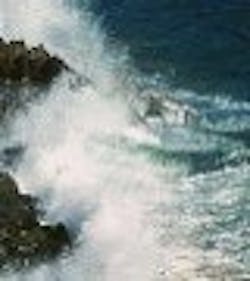By Agnes Shanley, Editor-in-ChiefOne of the most significant changes in pharmaceutical manufacturing has been the move to more rational, scientifically based approaches to regulation, symbolized by FDA’s “21st Century GMPs” initiative. Why dictate methods, regulators ask, when you can set standards and let manufacturers determine how best to meet them? The new thrust has spurred a whole new approach to process validation and to quality testing, ushering in initiatives such as process analytical technologies (PAT).
That same spirit appears to be guiding the U.S. Pharmacopoeia (USP; Rockville, Md.) as it updates standards for pharmaceutical-grade water to develop a more flexible, scientifically-grounded approach. The organization has replaced some wet chemistry methods dating back roughly 100 years with new analytical testing methods based on conductivity testing and total organic carbon (TOC) analysis. It is also working to harmonize testing and calibration requirements with those established in Europe, and will coordinate its efforts with Japan, which is planning to revise its water standards. New developments with important implications for drug manufacturers were discussed last month at the Water Summit and Utility Validation Conference, sponsored by Barnett International, Inc. and held in Philadelphia. Frank Barletta, USP consultant, provided some insights on the evolution of USP’s water regulations. Conductivity and TOC Testing Requirements1996 saw major changes to USP standards—particularly USP General Chapter <645>, which established water conductivity requirements for WFI and highly purified water, and USP <643>, which allowed the use of total organic carbon (TOC) measurement---a technique that, before that time, was not sensitive enough to work for pharmaceutical applications. General Chapter <645> established a three-stage method for conductivity testing involving an inline test — the first application of PAT, so far, in the USP — and two different offline lab tests. If a sample passes the first stage of testing, no further testing is required. If it fails at the first stage, but passes either the second or third stage, it meets requirements. “It’s like baseball,” said Barletta, “Three strikes and you’re out, and no corked bats.” However, he said, manufacturers should keep in mind that a non-temperature compensated meter must be used for Stage 1 testing, and devices must be calibrated very carefully. With TOC tests, pharmaceutical industry end-users often wonder how to determine the “limit,” since the value can vary widely in response to a number of factors. “If you are anywhere close to 500 ppb, you have a problem,” said Barletta. Another concern is how frequently a system suitability test should be done. The answer, Barletta said, “depends on how much risk you are willing to take.” Decisions should be based on historical data and one’s best judgment, he said. “Remember that system suitability is not the same as calibration,” he warned. Currently, for packaged water, USP is planning to adopt European conductivity limits, and will issue a new general chapter, USP <644>, clarifying requirements. WFI Standards Under RevisionAnother major change in approach was seen earlier this year, when USP revised USP 27, covering “water for injection” (WFI). Where, in the past, USP had dictated that WFI be processed only by distillation, it now sets distillation as the “standard,” but leaves the processing method up to manufacturers--provided they can prove that the method they select works as well or better than distillation in removing chemicals and microbes. USP had previously allowed for use of distillation or reverse osmosis. However, neither FDA nor European regulators currently allow RO to be used. In response, USP’s committee has decided to delete RO, but has kept the regulation’s wording “open” to allow for the use of new technologies as they develop.






